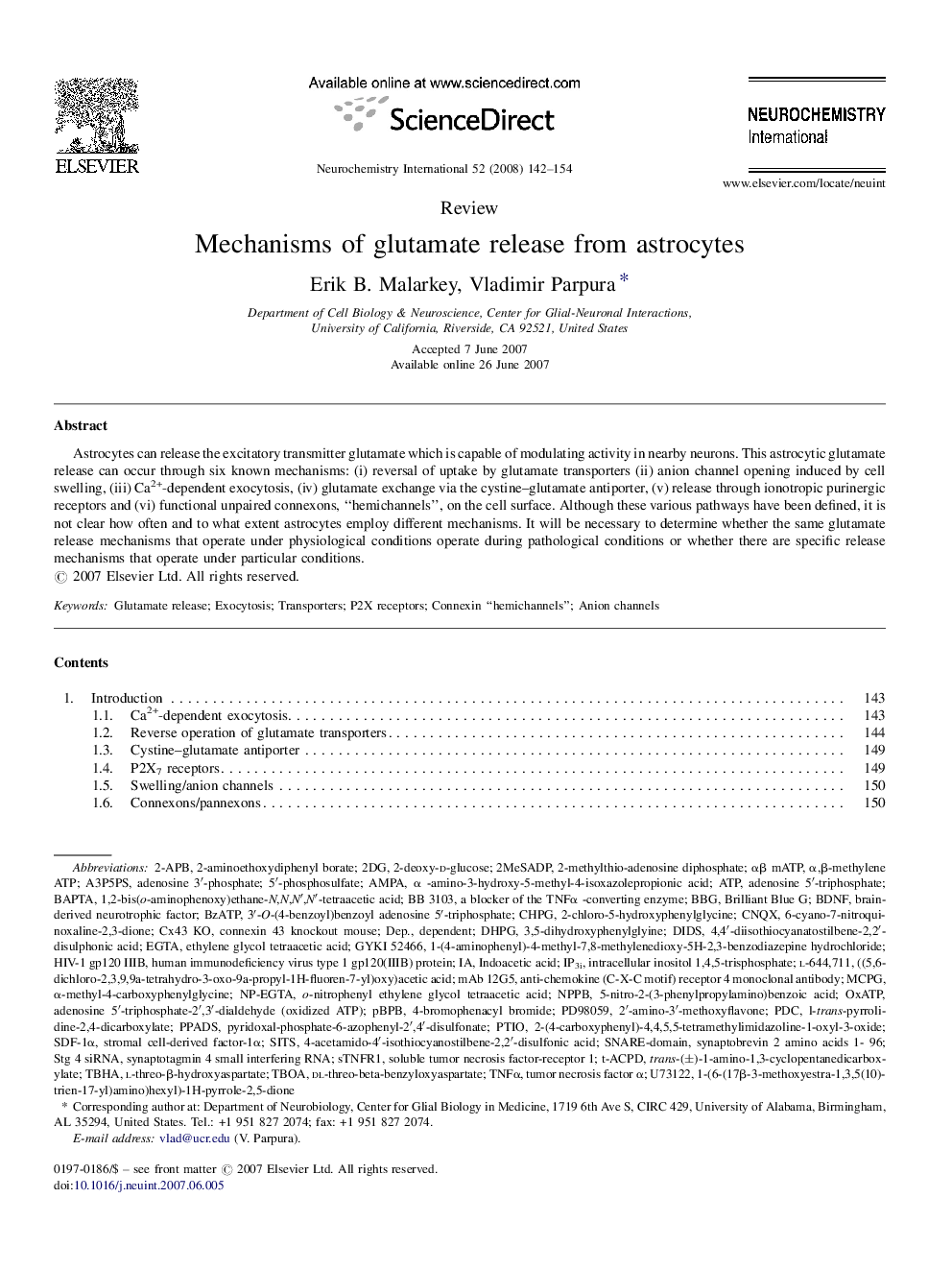| Article ID | Journal | Published Year | Pages | File Type |
|---|---|---|---|---|
| 8479408 | Neurochemistry International | 2008 | 13 Pages |
Abstract
Astrocytes can release the excitatory transmitter glutamate which is capable of modulating activity in nearby neurons. This astrocytic glutamate release can occur through six known mechanisms: (i) reversal of uptake by glutamate transporters (ii) anion channel opening induced by cell swelling, (iii) Ca2+-dependent exocytosis, (iv) glutamate exchange via the cystine-glutamate antiporter, (v) release through ionotropic purinergic receptors and (vi) functional unpaired connexons, “hemichannels”, on the cell surface. Although these various pathways have been defined, it is not clear how often and to what extent astrocytes employ different mechanisms. It will be necessary to determine whether the same glutamate release mechanisms that operate under physiological conditions operate during pathological conditions or whether there are specific release mechanisms that operate under particular conditions.
Keywords
PD98059TBOANppbCHPG2-APB2-aminoethoxydiphenyl borateoxATPPPADSU73122STNFR1SDF-1αTNFαBrilliant Blue GBBGMCPGGYKI 52466PbPbSITS2′-amino-3′-methoxyflavoneα-methyl-4-carboxyphenylglycinel-trans-pyrrolidine-2,4-dicarboxylate4-bromophenacyl bromide2MeSADPAMPAEGTADHPGPDC2DG2-deoxy-d-glucoseBzATPDIDS1,2-Bis(o-aminophenoxy)ethane-N,N,N′,N′-tetraacetic acid2-(4-carboxyphenyl)-4,4,5,5-tetramethylimidazoline-1-oxyl-3-oxide5-nitro-2-(3-phenylpropylamino)benzoic acid6-Cyano-7-nitroquinoxaline-2,3-dioneBDNFPTIOt-ACPDα,β-methylene ATPadenosine 5′-triphosphateATPethylene glycol tetraacetic acidglutamate releaseExocytosisDependentBAPTAtumor necrosis factor αTransportersCNQXStromal cell-derived factor-1αBrain-derived neurotrophic factoranion channelsP2X receptors
Related Topics
Life Sciences
Biochemistry, Genetics and Molecular Biology
Cell Biology
Authors
Erik B. Malarkey, Vladimir Parpura,
